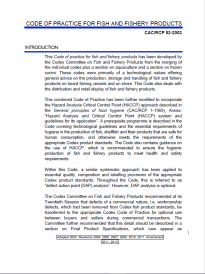On-board Handling in Large Scale Fisheries
On board handling refers to the conditions that fish are subjected to after harvest and through the point of landing, when the fish is transferred on-shore. What happens to fish during this crucial period has implications for food loss and waste (FLW) at the subsequent stages of the value chain.
Unless fish are handled properly, chilled, and good hygiene conditions prevail, spoilage and quality deterioration will accelerate, particularly in tropical areas, where ambient temperatures are high and conducive to rapid bacterial growth. A key loss at this value chain stage is primarily a loss in quality.
Large scale vessels tend to be large enough, equipped and designed to be able to facilitate good on-board handling, preservation and good standards of food safety. However, some vessels will stay at sea for prolonged periods and this will have implications on the quality of fish landed.
Key causes of FLW related to on board handling on large scale vessels include:
- Cross contamination – fish coming into contact with unclean surfaces and unhygienic crew can pick up bacteria that spoil or pose food safety risks
- Improper washing – fish not washed before being iced or stored on board could lead to increase in bacterial load
- Delays in chilling – delays between fish being caught and chilling to 0°C could lead to quality deterioration and development of food safety hazards such as histamine in certain species
- Rough handling – physical damage during initial handling and during storage could lead to bruising and damage to fish flesh, accelerating spoilage and affecting visual quality attributes of fish
- Bleeding – lack of, delayed or inadequate bleeding could lead to discoloration of fillets and loss in value
Extreme deterioration in quality of fish can lead to waste. What happens to fish before it is hauled onto the vessel also can affect quality. For example, spoilage can start as soon as a fish dies in a gill net or on a long line.
Key Publications
Quality and Quality of Changes in Fresh Fish The book describes fundamentals in fish biology, chemical composition of fish, and post-mortem changes, with a view to explain the rationale for optimal catch handling procedures and obtaining maximum shelf life. | ||
Code of Practice for Fish and Fishery Products CAC/RCP 52-2003 Global standard that presents information on freezing and cold storage practices which aim to reduce spoilage and waste. |
More Resources
More Resources
31 October 2023
01 October 2023
05 September 2023













